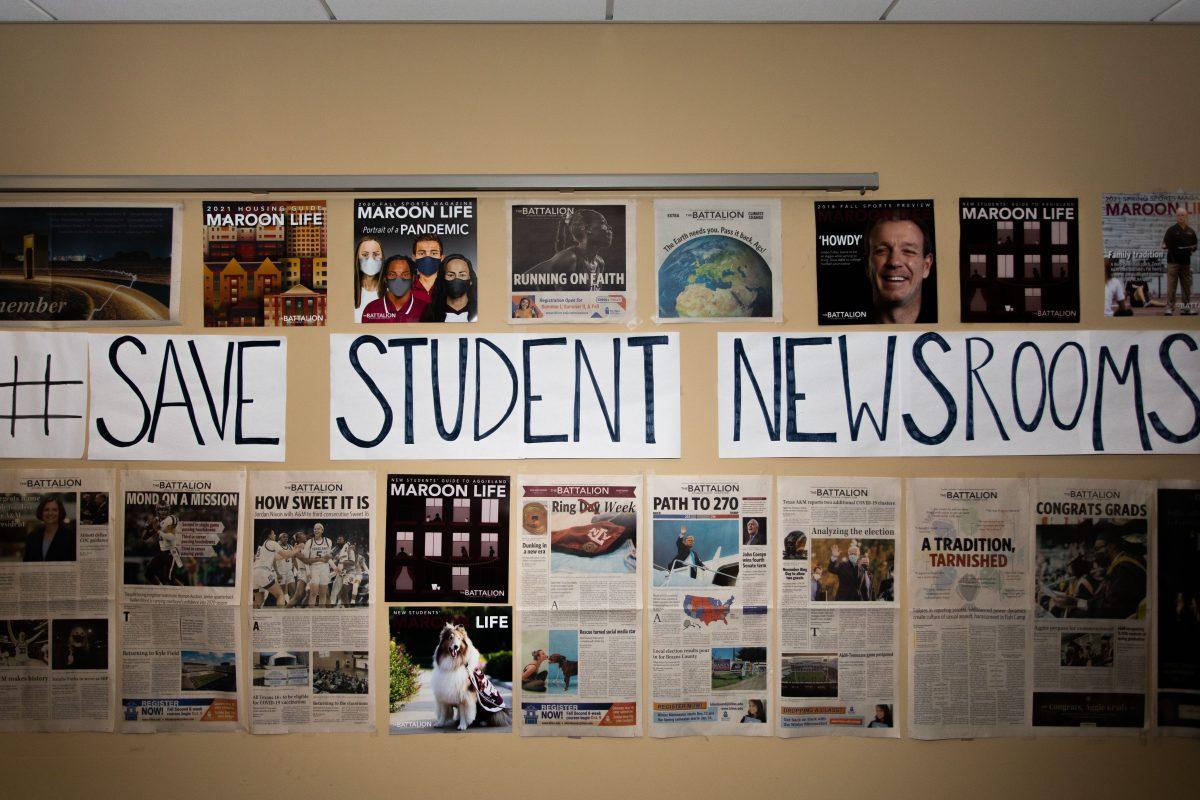Just over a year after Hurricane Harvey, biology senior William Schuyler Lamm is one of many still working to rebuild all that was lost.
Lamm is the president of Built To Help Others, previously known as BTHO Harvey, a student organization founded in August 2017 to rally support for those affected by the storm.
“In reality, things haven’t changed too much,” Lamm said. “Past couple months I’ve been doing plannings and everything for groups to go down this year too.”
The hurricane was the most significant tropical cyclone rainfall event in United States history and an estimated 40,000 flood victims evacuated to or took refuge in shelters across Texas and Louisiana, according to the National Oceanic and Atmospheric Administration’s public report.
Compared to other storms, Harvey brought a few firsts, according to instructional assistant professor of atmospheric sciences, Tim Logan.
“It’s the first time that an official storm surge warning was issued and then there was the first ever three-day advanced warning of excessive rainfall,” Logan said.
Logan said Harvey was also different in the way it developed. While a typical hurricane would go on an eastwardly path, there were two patterns preventing this motion, forcing it to continue its movement toward the Gulf Coast.
“It’s weather. Things are going to get damaged at some point,” Logan said. “But we do our best to protect life as best as we can because there’s certain things you can always rebuild. Once you lose your life, that’s pretty much it.”
Due to its size, scope and intense impact, Harvey won’t be soon forgotten, said Sam Brody, professor in urban planning and marine sciences at A&M and director for Texas Beaches and Shores.
“There are hundreds of thousands of people who were impacted that had never experienced that level of flood inundation before,” Brody said. “Some [areas] had flooded for the third time in three years, but in general the reach of the flooding was just so wide and impacted so many people that the collective memory of the storm is going to be longer than I think any other storm we’ve experienced.”
Lamm said he was inspired to volunteer when Harvey made landfall and he saw the level of destruction the storm brought. However, he said more should have been done in the last year.
Built To Help Others raised nearly half a million dollars, traveled to the Houston area to help rebuild and cleaned out about 30 to 35 homes, alleviating the stresses of those affected. Lamm said people still need walls put into their homes, furniture moved in, and much more, because many are still not able to live in their damaged properties.
“In the grand scheme of things, nothing’s really been completed in total, not only with just us but with all the other organizations that are trying to help out,” Lamm said. “There’s a lot more to do. That’s why we’re trying to get on this again and trying to get everyone knowledgeable that there’s a lot more to do and that there’s a lot of ways to still help.”
Brody is the lead technical expert in a group of his fellow-researchers gathering data analytics and evaluating the impacts of Harvey. The group is working to produce a definitive report for Rebuild Texas, a commission created by Texas Governor Greg Abbott and led by A&M System Chancellor John Sharp.
“There has been a surprising amount of positive change and a real appetite for change at the local, all the way up to the state level,” Brody said. “We’ve already seen some major initiatives take place in response to the storm which, frankly, surprised me.”
Despite what he has witnessed, Brody said he holds a positive attitude as he looks toward the future.
“I’m hopeful for the future despite all the problems we have,” Brody said. “Houston and Texas in general can become the leader in this area. The Texas A&M System has the expertise and the resources to lead the way for the state and I think nationally and internationally we can go from a perceived lagger to a leader in dealing with coastal and urban flooding. I think that’s going to be a critical thing for A&M to focus on in the future because we’re right at the hub of all these issues.”
One year after Harvey, research, relief efforts continue
September 6, 2018
Photo by Alex Miller
John Jones, Class of 2002, organized a group of around 50 people from the Bryan-College Station area, including a dozen Texas A&M students to help flood victims in Houston of Hurricane Harvey.
0
Donate to The Battalion
$0
$5000
Contributed
Our Goal
Your donation will support the student journalists of Texas A&M University - College Station. Your contribution will allow us to purchase equipment and cover our annual website hosting costs, in addition to paying freelance staffers for their work, travel costs for coverage and more!
More to Discover









